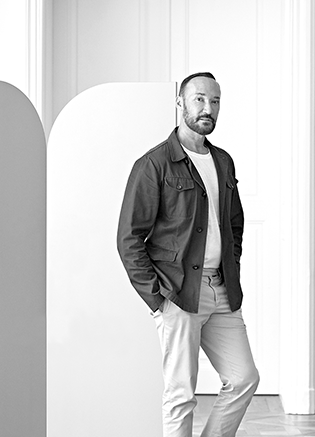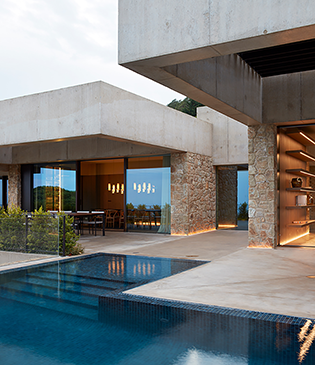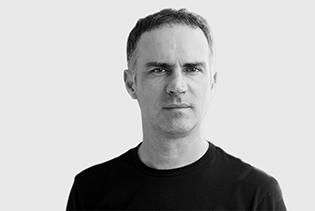Something of a departure for LZF, Suns is a celestial-like decorative panel. Designed by Mikiya Kobayashi, the Suns panel acts to diffuse light and break sound. Made by hand at LZF’s factory in Valencia, Suns consists only of a circular wood panel and metal canopy (available in small, medium, and large sizes).
In true Japanese tradition, Mikiya Kobayashi has a long-standing relationship with wood, and uses this natural material in many of his design projects. For Kobayashi, it is important that he remains connected with his cultural heritage, while also combining the past with modern-day practices and innovation.
Without light or electrification, Suns is characterised by a clean, quiet, and respectful beauty. In the ‘land of the rising sun’, these are inherent qualities of Japanese culture and design.

Mikiya Kobayashi.
Q&A with Mikiya Kobayashi (MK).
Suns is something of a departure for LZF: a decorative panel that acts to diffuse light and break sound. How did the design come about?
(MK): I was thinking about how beautiful sunlight is when looked at from underwater. With the Suns panel, I wanted to translate the interaction between the sun’s rays and continuous movement of the water’s surface. I chose to use wood—LZF’s specialty is of course crafting lamps with wood veneer—and wood is a material that I mainly use in my projects. We worked hard to make Suns as light as possible—you can almost imagine it might move in the wind, just as the sun’s rays sparkle when reflected by water.
You use wood throughout much of your work. Where does your passion for wood as a material originate?
(MK): From the beginning of my career, I have had an inclination for using natural resources during the design process: this is the main reason why wood is one of the materials I use most in my projects. Moreover, I feel closely connected to my cultural heritage, and wooden objects have a long tradition in Japan. I enjoy the challenge of connecting this tradition with new concepts, manufacturing processes, and technologies.
Your work embraces both traditional craft and new technologies. How do you reconcile such disparate approaches, and remain true to your cultural heritage?
(MK): I believe traditional craft and new technologies should coexist, as we need both. I think it is important that we keep moving forward, while at the same time understanding the importance of our origins. In my work, I try to keep this connection in mind, and find harmony in it. I am fascinated by the idea of technology taking inspiration from craft and tradition. I also like to think about the way in which craft can be developed using modern technologies and manufacturing processes. I sometimes wonder what craftspeople could have developed in the past, if they had today’s technology at their disposal.
Many of your designs are tactile and concerned with feeling. In what ways can design touch and enrich our lives?
(MK): We live in a world surrounded by objects. I believe that if we can give products an emotional feeling, we can then create a better relationship between the object and the user: good design can make the difference. In addition to its function, an object should be able to transfer a positive feeling when it is used—touch is of course one of the strongest connections we have with an object. In our daily lives, we can get used to uncomfortable actions. I like to examine these actions, and design objects that allow the user to experience how pleasant it is to interact with a good product.
You have a studio in both Tokyo and Valencia. On paper, they are two vastly different cities, but have you found certain similarities, particularly in terms of craft and design?
(MK): Tokyo and Valencia are of course very different in many aspects, and this is why I like them both. From a design perspective—at least in my personal experience—the two cultures might appear at odds, and yet I have found a strong, common connection in the passion for developing new products. Thanks to this, when I develop projects in Valencia, I often feel at home. I can almost forget the challenge of communicating in a different language, with people from a different country to my own.

















